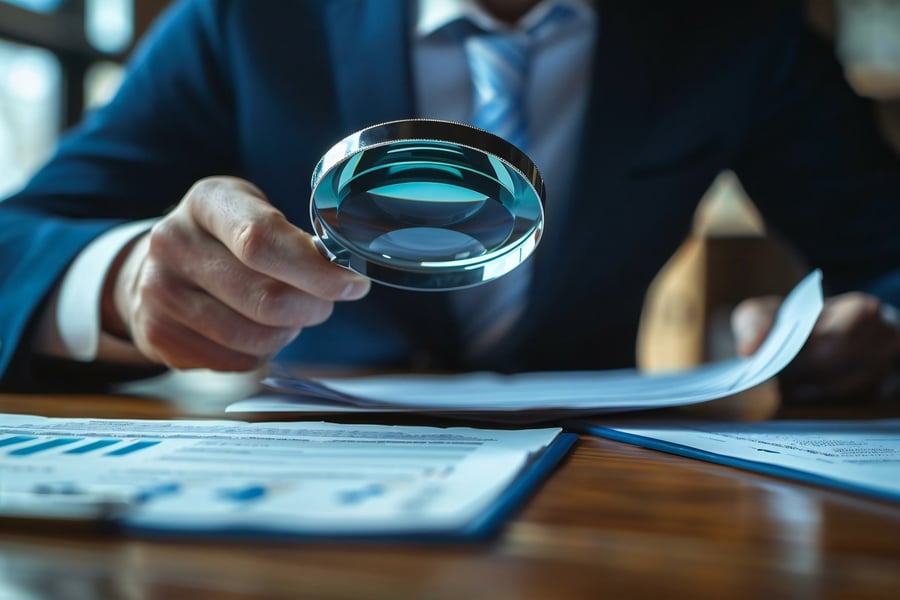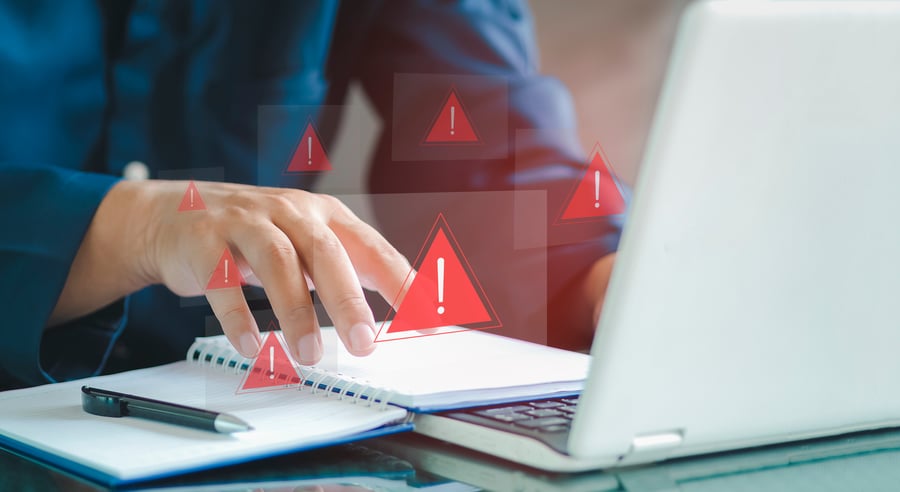Fraud can strike unexpectedly, leaving businesses vulnerable and at risk. As technology evolves, so do the tactics fraudsters use to exploit companies. Let’s explore how you can safeguard your business with practical strategies, real-life examples, and insights into how artificial intelligence (AI) is transforming the fight against fraud.
Shield your business from fraud with customer verification checks
Get a free credit report to get started
Fraud prevention
When it comes to preventing business fraud, there’s no such thing as a one-size-fits-all solution. The strategies you need can vary depending on factors like your company’s size or how long you’ve been in business. That said, one thing remains constant: fraud prevention is crucial for every business.
So, how can you keep your company safe from the threat of fraud? We’ve outlined key practices and strategies designed to strengthen your fraud prevention efforts.
5 Steps to protect your business from fraud
Fraud poses a significant risk to businesses of all sizes, with consequences ranging from financial loss to damaged reputation. Whether it’s fake identities, deepfake scams, or shifting business relationships, the threats are diverse and constantly evolving. Staying vigilant and proactive is essential to safeguarding your operations.
This guide explores practical approaches to mitigate fraud risks, from verifying who you’re dealing with to harnessing AI-powered tools. By implementing these strategies, you can build resilience against fraud and protect your business’s future.
Step 1: Know who you’re dealing with
Imagine this: You’re thrilled about landing a great deal with a new supplier. But weeks later, they vanish with your money, leaving you scrambling for alternatives. It happens to even the most careful businesses, which is why due diligence is your first line of defense against fraud.
To avoid these nightmares:
Verify the basics: Check that their website is secure and legitimate. Look for a secure URL starting with “https://” and make sure the site is free of red flags like poor grammar, vague content, or low-resolution images.
Use public records: Search for the company on official registries. For example, WHOIS can provide information about domain ownership and longevity.
Check addresses and phone numbers: Use Google Maps to verify their address and call their phone number to ensure it is operational. Be cautious if the same address or number is tied to multiple unrelated businesses.
This is where a solution like Creditsafe Protect comes into play. By simplifying the due diligence process, it gives you access to a global database of compliance information, including sanctions lists, enforcement records and adverse media. With just one search, you can verify entities thoroughly, saving time and avoiding costly mistakes.

Step 2: Spot fake identities before they fool you
Fraudsters often create fake identities to win your trust. In one case, a finance manager authorized payments after a convincing call from someone they thought was their CFO. It turned out to be a fraudster using AI-powered voice cloning.
To stay safe:
Use identity verification tools: These tools cross-check names, addresses and affiliations against global databases to flag inconsistencies.
Look for customer references and reviews: Ask for at least three industry references and review them critically. Genuine references provide specific details about the product or service delivered and often appear on trusted platforms like Trustpilot or G2 Crowd.
Trust your instincts: If anything feels off during your interaction, pause and investigate further.
Creditsafe protect screens for key risk factors, including politically exposed persons (PEPs), state-owned enterprises, and adverse media. By accessing millions of profiles across these categories, it provides a clear and accurate view of the individuals and companies you’re dealing with.
Shield your business from fraud with customer verification checks
Get a free credit report to get started
Step 3: AI - a double-edged sword
AI has revolutionized industries, but it’s also given fraudsters new tools to exploit businesses. Let’s dive into how AI is being misused—and how you can fight back.
Deepfake scams: when what you see (or hear) isn’t real
Imagine getting a video call from your CFO asking you to authorize a payment. You see their face, hear their voice and everything feels legitimate. But it’s a deepfake, created using AI to mimic your CFO’s appearance and voice.
A real-world example? A finance worker in Hong Kong was tricked into transferring $25 million after a staged deepfake call. To avoid this:
Verify unusual requests: Cross-check using verified communication channels before acting.
Educate your team: Teach employees about deepfake risks, how to spot inconsistencies, and ways to validate communication.
AI-powered tools aren’t only used by fraudsters; they’re also invaluable in fighting fraud. Creditsafe Protect for example, integrates AI into its platform to recognize patterns, monitor transactions and flag anomalies, giving you real-time alerts for potential threats before they escalate.
Step 4: Monitor relationships continuously
Fraud isn’t a one-and-done threat. Businesses and their circumstances evolve, which is why ongoing monitoring is critical. For instance, a construction company partnered with a contractor who seemed reliable but later ran into legal trouble, delaying projects and costing thousands.
Set up alerts for:
Ownership changes: Sudden shifts in leadership could signal instability.
Negative media coverage: Headlines about legal or financial trouble are clear warning signs.
Financial health: Use tools like business credit reports to track a company’s credit score or detect group structures that could expose your business to risk.
Creditsafe’s monitoring capabilities ensure you’re not caught off guard by changes in your business relationships. With real-time updates and automated alerts, you can respond quickly to shifts that may indicate fraud or instability.

Step 5 : Train your team: knowledge is power
Your employees are your front line. Without proper training, even the best tools can’t prevent fraud. For example, a simple phishing email tricked an employee into changing a vendor’s bank details, resulting in a massive loss.
Here’s how to empower your team:
Spot red flags: Teach them to recognize suspicious emails, urgent payment requests, and vague invoices.
Double-check changes: Always verify new bank details or unusual requests with a phone call.
Create a culture of caution: Encourage employees to speak up if something doesn’t feel right.
By integrating Creditsafe Protect into your workflow, training your team becomes even more effective. The straightforward interface and real-time data allow employees to navigate compliance and fraud prevention tasks with confidence, leaving them more time to focus on your core business goals.
Fraud isn’t just about losing money—it’s about protecting your reputation, trust, and the future of your business. While scammers are finding new ways to trick companies, there are smarter tools to stop them. Creditsafe offers easy-to-use tools like Creditsafe protect and real-time monitoring to help you stay ahead of the game, not just react to problems.
By pairing these tools with good internal practices, a watchful eye, and a well-informed team, you can create a strong plan to prevent fraud and keep your business safe. Let Creditsafe make it simple to protect what matters most as your business grows.
Shield your business from fraud with customer verification checks
Get a free credit report to get started

About the Author
Nileema Ali, Senior Product Manager, Creditsafe
Nileema Ali has more than 16 years of experience in senior compliance and risk management roles within the legal and banking industries. As a consultant for JP Morgan, Deutsche Bank and Wells Fargo, Nileema applies her compliance and risk management knowledge to help businesses make informed business decisions.